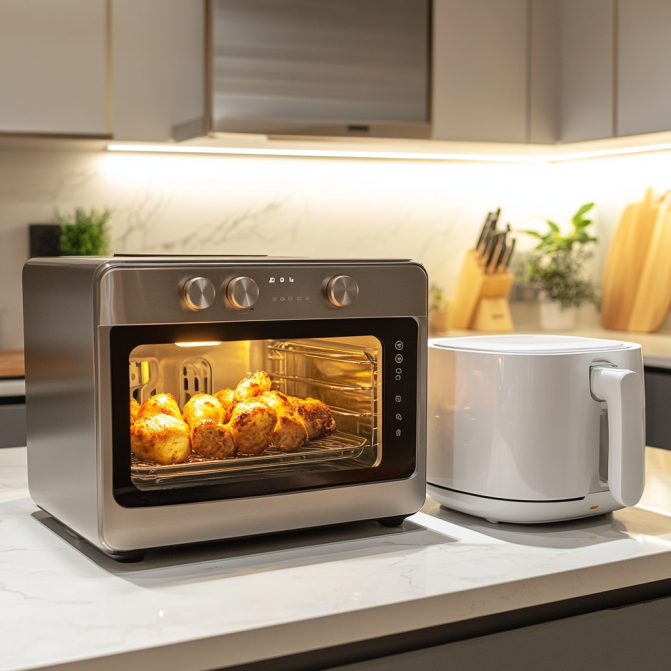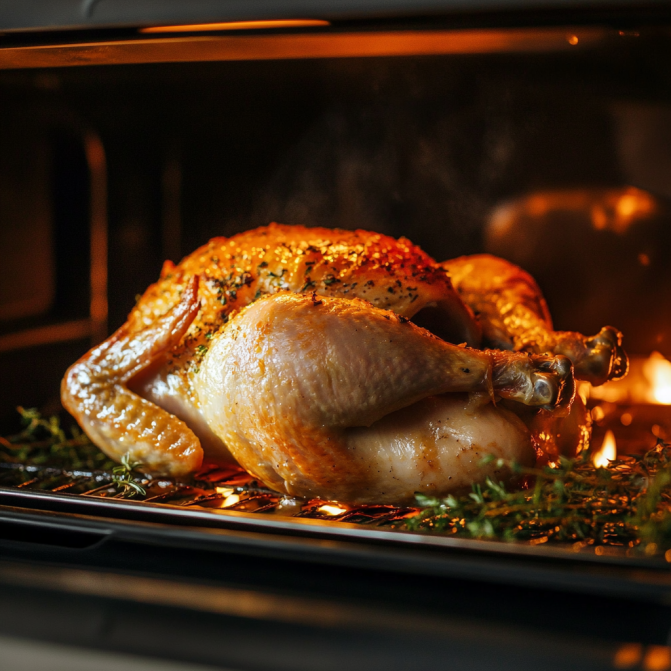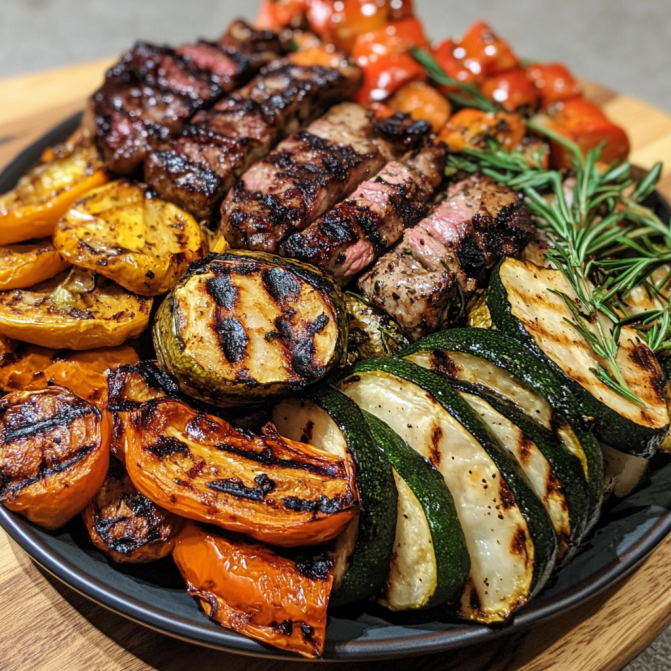Versatility Air Fryer Vs Oven: Which Is Better?
In the world of cooking, air fryers and ovens have taken centre stage, each boasting unique advantages and capabilities. As home chefs seek healthier, faster, and more versatile cooking options, understanding the differences between these two appliances is essential. This article explores how air fryers and ovens cook food, their respective pros and cons, and their versatility in preparing various dishes. We will also examine which method may be more beneficial for weight loss. Get ready to uncover the secrets behind these popular kitchen tools!
What are Air Fryers and Ovens?
Air fryers and ovens represent contemporary countertop appliances that have transformed cooking methods by providing versatility in the preparation of a wide range of dishes. Each appliance employs distinct technologies to cook food, presenting unique advantages relating to energy efficiency, cooking time, and food texture. Air fryers are particularly noted for their capability to fry, bake, and grill with minimal oil usage, while ovens offer a larger cooking space that is well-suited for preparing substantial meals or baking. A comprehensive understanding of the features of these appliances enables consumers to make informed decisions in line with their specific cooking requirements.
Comparison of Cooking Methods
When comparing cooking methods, air fryers and ovens demonstrate notable differences in cooking time, temperature control, and overall performance. Air fryers employ rapid air circulation technology, which leads to shorter cooking times and expedited meal preparation. In contrast, traditional ovens typically require longer preheating periods and extended cooking durations. An examination of these cooking methods reveals their distinct advantages and how they influence food quality, flavour retention, and the overall user experience.
How do Air Fryers and Ovens Cook Food?
Air fryers and ovens employ distinct cooking methods that significantly impact the overall cooking experience and food outcomes. Air fryers utilise a convection-style approach, circulating hot air around the food to ensure even cooking with enhanced crispiness and browning. In contrast, ovens rely on radiant heat that envelops the food, typically requiring more time for uniform heat distribution. A comprehensive understanding of these cooking mechanisms enables users to select the most suitable appliance based on their culinary preferences and desired results. The technology inherent in air fryers features high-speed fans and heating elements that collaboratively create a rapid cooking environment, thereby reducing cooking time and enhancing moisture retention. This not only facilitates quicker meal preparation but also yields a delightful, crunchy texture that simulates traditional frying without the additional oil. Conversely, conventional ovens operate using heated coils or gas burners, which generate a more gradual and consistent temperature. While this method produces excellently roasted and baked foods, it often falls short in achieving the crispiness for which air fryers are renowned. By recognising these differences, users can make informed decisions that align with their cooking methods and enhance their culinary creations.
Pros and Cons of Air Fryers
Air fryers offer a distinctive array of advantages and disadvantages that appeal to health-conscious individuals seeking convenience and efficiency in meal preparation. Among the significant benefits are their ability to reduce oil consumption, thereby promoting healthier meal options, and their rapid cooking times, which facilitate quick meal solutions. However, there are potential drawbacks, including a smaller cooking capacity in comparison to traditional ovens and the necessity for additional attachments to accommodate various cooking methods such as roasting or baking, which may affect overall versatility.
Benefits and Limitations of Using an Air Fryer
Utilising an air fryer presents numerous advantages, including enhanced energy efficiency and expedited meal preparation; however, it is important for potential users to be aware of its limitations. Many air fryers are equipped with user-friendly features, making them particularly suitable for busy individuals who seek quick and healthy cooking options without sacrificing flavour retention. Nevertheless, their compact size may restrict cooking capacity, which can pose challenges when preparing meals for a larger family in a single batch. On a positive note, the ability to control cooking time and temperature allows users to experiment with a variety of recipes, ensuring that dishes are cooked to perfection while minimising the need for excessive oil. This flexibility not only accommodates various dietary preferences but also fosters creativity in culinary endeavours. However, the limited cooking space may require batch cooking for larger gatherings, potentially resulting in longer overall meal preparation times. While many users appreciate the convenience offered by air fryers, some have reported experiencing a learning curve in achieving optimal results, especially when adapting traditional recipes for air-frying techniques.
Pros and Cons of Ovens
Ovens are essential kitchen appliances that offer distinct advantages and disadvantages, impacting their effectiveness across various cooking styles. A notable benefit of ovens is their larger cooking capacity, which facilitates the preparation of meals suitable for families. Additionally, their durability and robust construction contribute to long-term usability. However, it is important to consider that ovens may consume more energy and necessitate longer cooking times when compared to air fryers, resulting in a trade-off between performance and energy efficiency.
Benefits and Limitations of Using an Oven
Ovens present a variety of benefits and limitations that cater to diverse cooking styles and meal solutions. They are particularly noted for their versatility, enabling users to bake, grill, and roast, thus providing an extensive array of recipe options. However, their size and longer preheating times may pose challenges for individuals seeking quick meal solutions. Consequently, it is essential for users to carefully consider these factors when selecting an oven for their kitchen. Plus their multifunctional capabilities, ovens are capable of accommodating a wide range of dish types, from delicate pastries to hearty casseroles, thereby significantly enhancing the overall user experience. This adaptability ensures that whether one is preparing a simple weeknight meal or an elaborate feast, the oven remains an critical culinary tool. It is also important to acknowledge that while heat distribution is generally effective, uneven cooking may occasionally occur, particularly in larger models. Therefore, balancing these advantages and limitations is crucial for anyone looking to optimise their culinary endeavours and achieve consistent results in every dish.
Versatility of Air Fryers and Ovens
The versatility of air fryers and ovens significantly influences consumers’ decisions regarding kitchen appliances, as both provide a range of cooking methods that enhance meal preparation. Air fryers are renowned for their ability to fry, bake, and grill using minimal oil, which makes them particularly appealing for health-conscious cooking. In contrast, ovens accommodate larger meals and a variety of cooking techniques, including roasting and baking. This versatility enables users to explore diverse recipes and cooking methods, thereby enhancing their culinary experience.
What Types of Foods Can be Cooked?
Both air fryers and ovens possess the capability to accommodate a wide variety of food types, thereby facilitating creative cooking styles and Diverse recipe options. Air fryers are particularly proficient in preparing crispy vegetables, meats, and even desserts using significantly less oil than traditional frying methods. In contrast, ovens excel in baking bread, casseroles, and larger meals such as roasts. The ability to utilise various ingredients with these appliances enhances the versatility of meal preparation. With air fryers, one can easily prepare nutritious dishes like roasted Brussels sprouts or crispy chicken wings that maintain their flavour without compromising health. Conversely, ovens are particularly effective in the preparation of comfort foods, such as lasagne or multiple batches of biscuits, ensuring even cooking and achieving the desired golden-brown finish. The adaptability of these cooking methods give the power tos chefs to experiment with a range of recipes, resulting in meals that are not only diverse but also showcase high-quality taste and texture, thereby making mealtime both engaging and satisfying.
Which is Better for Weight Loss?
Determining the superior appliance for weight loss necessitates an evaluation of the health benefits and cooking methods associated with both air fryers and ovens. Air fryers are often preferred for their ability to significantly reduce oil usage, thereby promoting healthier meal options. Conversely, ovens provide a broader range of cooking techniques that can also aid weight management. It is essential to understand the influence of various cooking methods on meal preparation for individuals committed to a health-conscious lifestyle.
Impact of Cooking Method on Health and Weight
The cooking methods utilised by air fryers and conventional ovens significantly influence health and weight management. Air fryers employ rapid air circulation to minimise oil usage, resulting in meals that are lower in calories and fat, thereby supporting weight loss efforts. In contrast, traditional ovens offer flexibility in cooking styles, allowing individuals to prepare a diverse array of healthy dishes while taking portion sizes and ingredient compatibility into account for effective weight control. When individuals adopt air frying as their primary cooking technique, they often discover that they can enjoy crispy textures without the excess calories typically associated with traditional frying. This approach not only satisfies cravings for indulgent meals but also promotes healthier eating habits. Simultaneously, ovens provide the capability to roast, bake, and grill, facilitating the preparation of diverse meals that can include nutrient-rich vegetables, lean proteins, and whole grains elements that are essential for a balanced diet. Health-conscious cooks can experiment with spices and herbs in both cooking methods, enhancing flavour without the addition of unnecessary fats, thus simplifying adherence to their dietary goals.










